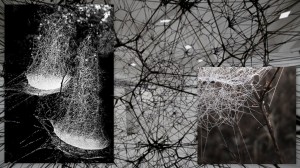Simple complexity.
Patrick Schumacher explains parametric. It’s an Abstract symmetry.
Systematic innovation which is the style for the present and the future. Architecture and urbanism are called upon to organize and articulate the increased complexity of the society and parametric should be the style used.
The first thing for which the style is recognized is for its aesthetics, it is a very long term style of design. Long term as it does not depend on the scale. It can be used on an urban level, may it be to design an individual project or an interior project or even a piece of furniture.
Patrice talks about the style, constantly contradicting at every step. “continuous differentiation”
The style has a certain elegance to it, having a ordered complexity. The connections to it. Every minute connection within themselves are important and unique. The style gives way to intricate options, opening up various probabilities. The internal connections or routes make the whole in large so complex to understand. Because of the very complexity Patrick keeps on referring the need of technologies used in this particular style. How technical knowledge makes the difficult standardization open and easy to perceive.
The second thing: fluidity
the style is a free flowing form. Innate to its preceding styles. he talks about the modern style. How a rigid geometry was the basis of the designing strategies of the styles. On the contrary this style is a natural flowing system. With not one element similar. It is inspired by the natural path taken. He talks about peoples straight forward, goal oriented path and “the donkeys path” . The organic hold to this style is the very derivative from the world around. He talks about liquids in motion, structure that are formed by radiating waves, laminal flows.
The third he talks about is deformation:
Deformation is not breaking of order but it is in fact the lawful inscription of information. The deformation is necessary in the scale as whole, when a more densely oriented area needs more connections hence more complex structure than a scarcely dense area. Making the whole structure of the form deformed.
Parametric being a very complex, well patterned style. it consists of methodologies and some rules. The style takes into consideration the old principals which need to be preserved. Every style has its hard core set of rule books and the way of tackling problems. The rules both being positive and negative.
Negative: the negative part is to avoid basic geometry like square, triangle and circles. To avoid repetition of the elements.
Parametric is best used on an urban scale. The larger the scale the more capacity to articulate programmatic complexity.
Parametric on an urban scale helps construct new fields of operating. The different system: fabric modulation, street system, open space relationships. He further talks about the massing, how details are part of the style. The orientation, climatic and visual. The thought given in the entrance and the internal circulation (small detailed things) . The deep relationship between the minute things.
Emergence by Steven Johnson – ignorance is sometimes good. Its better to have a simple element, which is thus interconnected to form a complex pattern. Which the text gives an example of the life of ants. How ignorance is better in making the thing simpler on a smaller scale, and then gets complex moving up.
Parametric can have a similar approach. The simpler elements can merge to make a complex whole. And the whole itself can be made easier to understand by the technologies available now. The complexity can be broken down to understand and use It better.
Topic of interest.
If taken into an urban scale, to see how the densely formed areas behave on the contrary to the areas less dense. Would the complexity increase with the increase of elements or would it be simpler.
How to make a dense space simpler and a simple space complex. Just so it either merges with each other or contradicts their existence.


